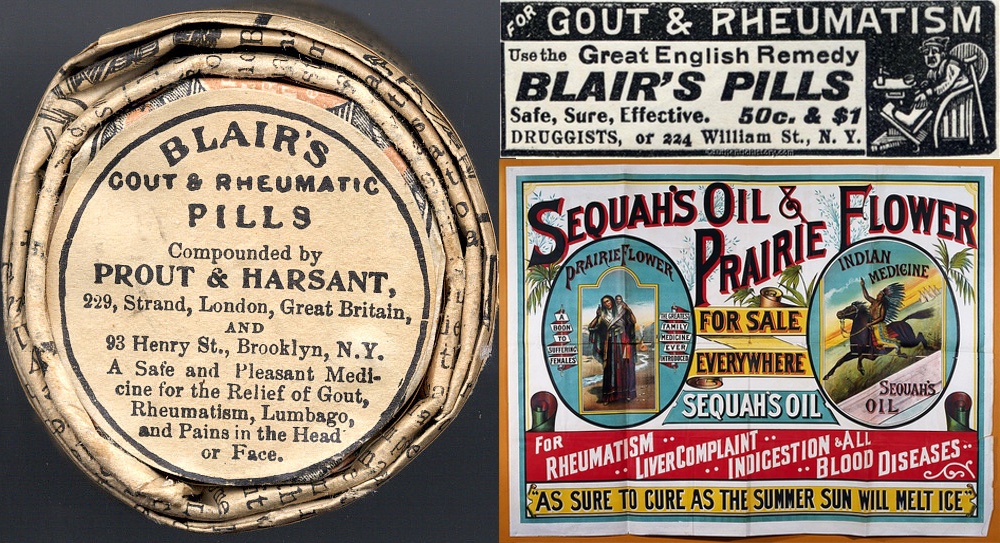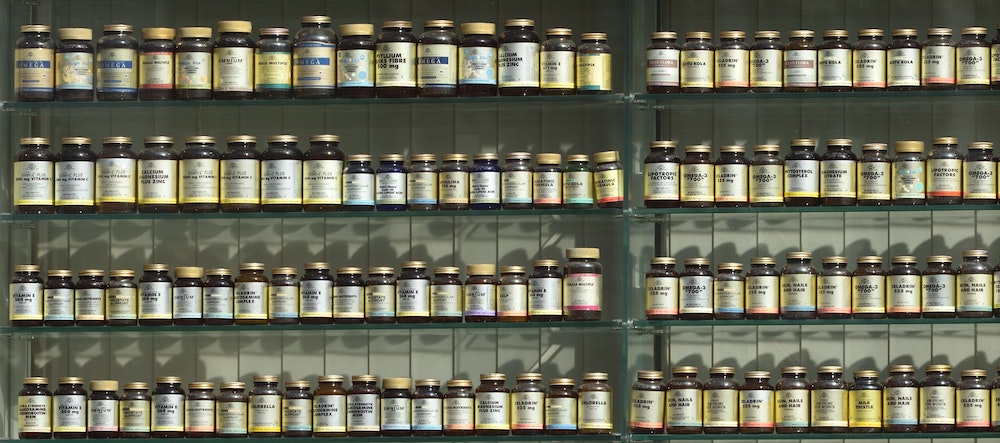Why snake oil succeeds
Why did people keep buying quack medical cures long after the advent of modern medicine, even though they never worked?
Few products in history have been as successful as the so-called “patent medicines” that had their heyday in the 1800s. These pills and potions promised to cure everything from indigestion to cancer, and their names and reputations survive today: nostrums, cure-alls, panaceas, quack remedies, elixirs, heroic remedies, snake oil.
In reality, these supposed cures had no medicinal effect. Although some contained morphine or cocaine, most were made up of nothing more than alcohol, sugar, and herbs. But, despite that, between 1810 and 1939 consumers in the US spent a cumulative $195 billion (in 2021 dollars) on them. In 1909, Americans spent more on these medicines than on agricultural machinery – despite a third of the population being engaged in agriculture at that time. Quack cures were big business.

That might seem counter-intuitive. How could a market flourish for products that had no positive effect? Surely, at some point, consumers would realise they were being ripped off and stop buying them? But that doesn’t seem to be the case.
The first issue is that people with chronic medical conditions are, quite understandably, desperate for a cure. They’re suffering from something, and have a high level of motivation to ameliorate that suffering. That means they look hard for products that might help, and keep looking for alternative products if the ones they try don’t work. (The economist Werner Troesken refers to this, delightfully, as “unusually low elasticity of demand with respect to product failure”.)
Second, because the medicines never work and because there are no other cures for their conditions, they never exit the category by virtue of being cured. That means that demand only ever increases, as the set of people buying cures increases over time.
These two factors mean that the wild success of the market for snake oil didn’t happen despite the medicines’ lack of effectiveness; it happened because of it. If the medicines had worked, consumers would have stopped buying them as soon as they were cured, and they wouldn’t have needed to try so many in the first place.
This booming market was both driven by and led to a similar boom in advertising. Some of the earliest sophisticated advertising campaigns were to advertise these cure-alls, since they existed in market conditions of high demand and high supply, as James Harvey Young pointed out:
“Since sickness was well-nigh universal, the demand for his wares was potentially inexhaustible. But then, so also was the supply… there was no end to the variety and quantity of ingredients available, and there were soon more pills and potions than Americans could swallow conveniently. The medicine man’s key task quickly became not production but sales, the job of persuading ailing citizens to buy his particular brand from among the hundreds offered.”
You might expect that this advertising-fuelled boom was short-lived, though. Surely as modern medicine developed, the market for alternative cures would diminish? The germ theory of disease only became a mainstream scientific consensus in the 1880s; the peak of patent medicines coexisted with the first faltering steps of modern medicine. Perhaps demand for cure-alls simply reflected a lack of affordable, effective, conventional medicine?
The richest irony of all is that advances in medicine didn’t just fail to diminish demand for quack cures; they actually increased it. The peak years for patent medicine sales all came long after the advent of modern medicine.
There are two reasons for this: first, an unpalatable truth will often lose out to a delusionally positive falsehood. If your doctor tells you that there’s no hope and no cure for your illness, but the patent medicine seller tells you “all you need to do is take this miracle tonic”, a large number of people will be more inclined to believe the latter. James Harvey Young again:
“Wherever regular physicians were weak, lo, there the nostrum maker was strong. Their therapy was brutal, his was mild. Their treatment was costly, his was cheap. Their procedures were mysterious, his were open. Their prescriptions were in Latin, his label could be ready by all. Their attack on illness was temporising, his was quick. Their approaches were cumbersome, his were simple. Their techniques led to the grave, his never failed.”
Secondly, and most ironic of all, modern medicine improved life expectancies for much of the population. Advances in science had their greatest wins against infectious diseases like cholera and smallpox. These diseases were never a particular focus of patent medicines, since their sufferers tended to die before they could buy many pills. But as people stopped dying of preventable infections and lived longer, they also tended to develop more chronic conditions for which there were no cures – and these represented the most fertile ground for the quack. And so advances in medicine drove more people into the hands of fake cures, driving sales upwards.
The history of patent medicines is frustrating, both as a historical lesson and for its modern parallels. Writing in 1967, James Harvey Young offered an optimistic view of the future:
“Knaves there will always be, and fools – whatever the justification for their folly – and, therefore, pseudo-medical deception. Yet there is room for guarded optimism that the high tide of medical quackery at the middle of the 20th century might be at least pushed back. Ever stronger federal regulation, more rigorous state laws better enforced, education more appropriately aimed than in the past, an increasing adequacy of sound medical care for a larger portion of the population, these forces might be expected eventually to reduce in some measure quackery’s enormous toll in wasted dollars and frustrated hopes for health.”
We do indeed live in an age of far greater advertising regulation and far more advanced medical knowledge, as Young predicted. And yet people claim that CBD can treat Parkinson’s, Alzheimer’s, and cancer – as the market for CBD grows to $2.8 billion. The coronavirus pandemic was a boon for those selling fake cures. Have we really progressed that much in the last two hundred years? The conditions that led to the flourishing market for patent medicines have not gone away. We might not be able to buy “Mug-Wump” or “Hamlin’s Wizard Oil” any more, but there are countless other modern equivalents, with equally slick branding and marketing. Perhaps snake oil will always be with us.
Further reading
Werner Troesken. “The Elasticity of Demand with Respect to Product Failures; Or Why the Market for Quack Medicines Flourished for More Than 150 Years”. National Bureau of Economic Research Working Paper 15699, January 2010
National Museum of American History. “Balm of America: Patent Medicine Collection”
James Harvey Young. “The Toadstool Millionaires: A Social History of Patent Medicines in America Before Federal Regulation”. Princeton Legacy Library, 2015 (Originally published: 1961)
James Harvey Young. “The Medical Messiahs: A Social History of Health Quackery in Twentieth-Century America”. Princeton Legacy Library, 2016 (Originally published: 1967)

Add a comment